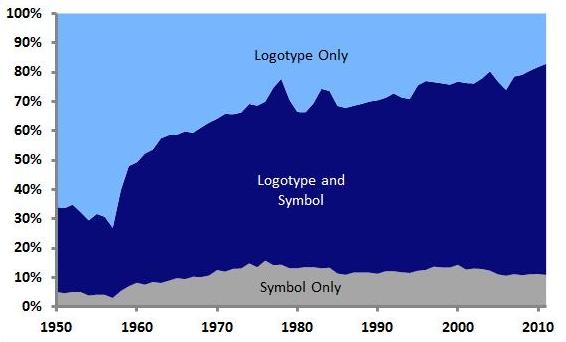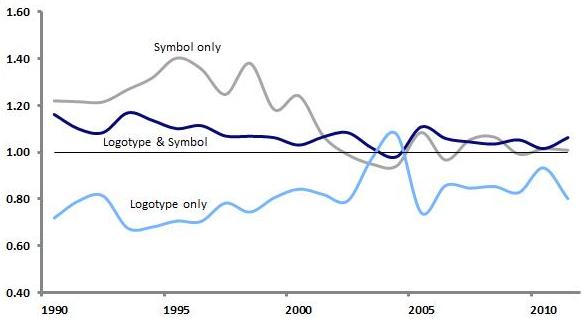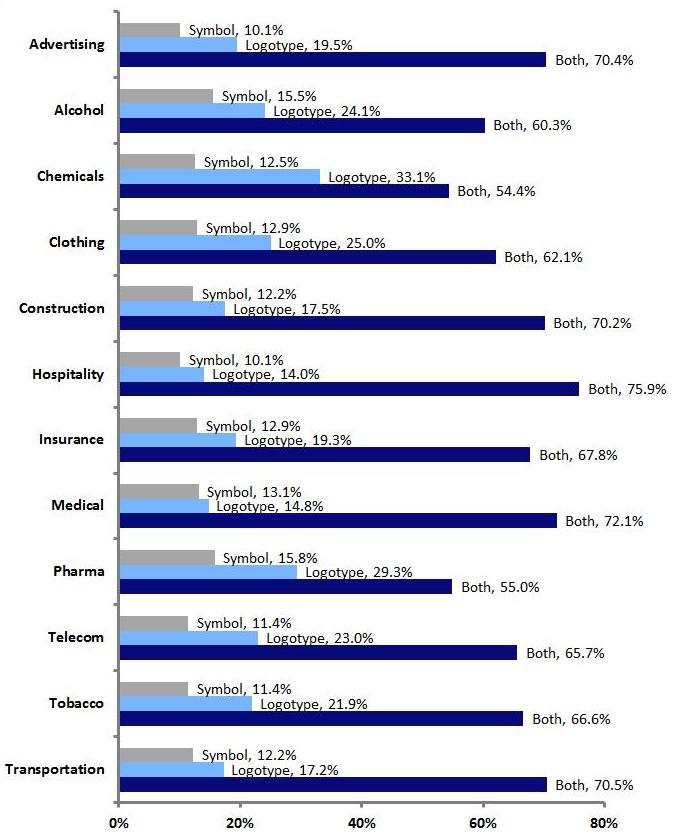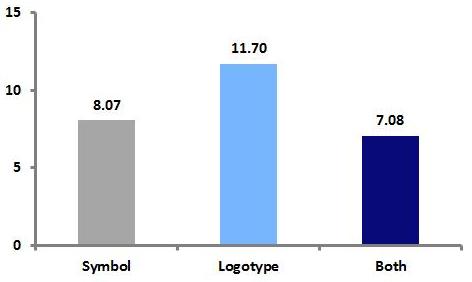A common question in branding and identity design concerns the relative effectiveness of logotypes (stylized typographic expressions of a company or brand name) and symbols (graphic icons that represent a company or brand).
Those from a marketing background often pooh-pooh graphic symbols and recommend the use of logotypes, which promote a name above all else. Jack Trout, writing for Forbes in 2007, declared:
“Logos have been with us for thousands of years…The Roman legions had them. In the middle ages, every two-bit duke with a handful of knights had one plastered on their shields. There were crests or coats of arms everywhere. But none ever amounted to anything. What lived on were the names of the people involved or the places the big battles were fought. What does that tell you? It’s not about the symbol. It’s about the name connected to the symbol.”
Designers, not surprisingly, have more appreciation for the power of symbols relative to logotypes. In a 1999 Communication Arts article, Mark Fox discussed Nike’s decision to detach its Swoosh symbol from its logotype:
“After the connection between a company and logo…is sufficiently understood by the public, the power of the logo can, on occasion, be increased by dropping the company name. Beyond making the symbol translingual, the lack of text can allow the logo to possess a certain ineffable quality that suggests far more than it could before. The ancient Hebrews realized this and, as a result, had a proscription against writing the name of God. That which is named is always less powerful than that which is unnamed.”
Analysis of United States Patent and Trademark Office data can shed some light on the relative use and success of symbols and logotypes.
Relative Use of Graphic Trademark Types
The graph above shows that, over the last five decades, the most common type of graphic trademark filed for registration in the US has moved from the logotype alone to the combination of logotype and symbol. The prevalence of the unaccompanied symbol has risen slightly, but it remains the least common of the three options (of course, many companies will register multiple versions of their trademarks, featuring logotype, symbol, or both).
“Trendiness” of Graphic Trademark Types
By factoring in the types of trademarks that are “dying” (being abandoned or canceled, or expiring) in a given year, we can get a sense for how “trendy” each of these types has been.
The above graph’s vertical axis represents a ratio of the share of graphic trademark type in new logos in a given year to the share of graphic trademark type in dying logos from that year. So if symbols account for 20 percent of new trademarks in a year and 20 percent of dying trademarks in that year, their ratio is 1, meaning that they are not at all trendy in a positive or negative way. However, if logotypes made up 80 percent of new trademarks and just 40 percent of dying trademarks, their ratio would be 2, meaning that they would be very “hot” for that year. Likewise, if combinations of logotypes and symbols were used just 20 percent of the time in new trademarks and 60 percent of the time in dying trademarks, their ratio would be 0.33, making them quite “cold.”
We can see that for much of the past two decades, symbols were “hot” while logotypes were “cold.” Only in the past few years has the logotype/symbol combination become hotter than symbols alone, while logotypes alone continue to seem to be dying out at a faster rate than they are being created.
Graphic Trademark Type by Industry
Looking at selected industries, we can see that symbols alone are used most often in pharmaceutical and alcohol trademarks, and least often in advertising and hospitality. Logotypes alone are used most in chemical and pharmaceutical marks, and least often in hospitality and medical marks. Combinations of logotypes and symbols are used most often in the hospitality and medical industries, and least often in chemical and pharmaceutical trademarks.
Another way to assess the relative success of the different types of graphic trademarks is to look at how long they survive in use, from the time they are filed for registration until they are abandoned, canceled, or expired.
Lifespan, in years, of graphic trademark types
The graph above shows that, among trademarks that have died, those using logotypes alone had the longest average lifespan (11.7 years, followed by symbols alone (8.07 years) and the logotype/symbol combination (7.08 years). While a trademark’s survival over time does not necessarily mean that it is an effective mark, such longevity should be seen as a positive thing in general.





